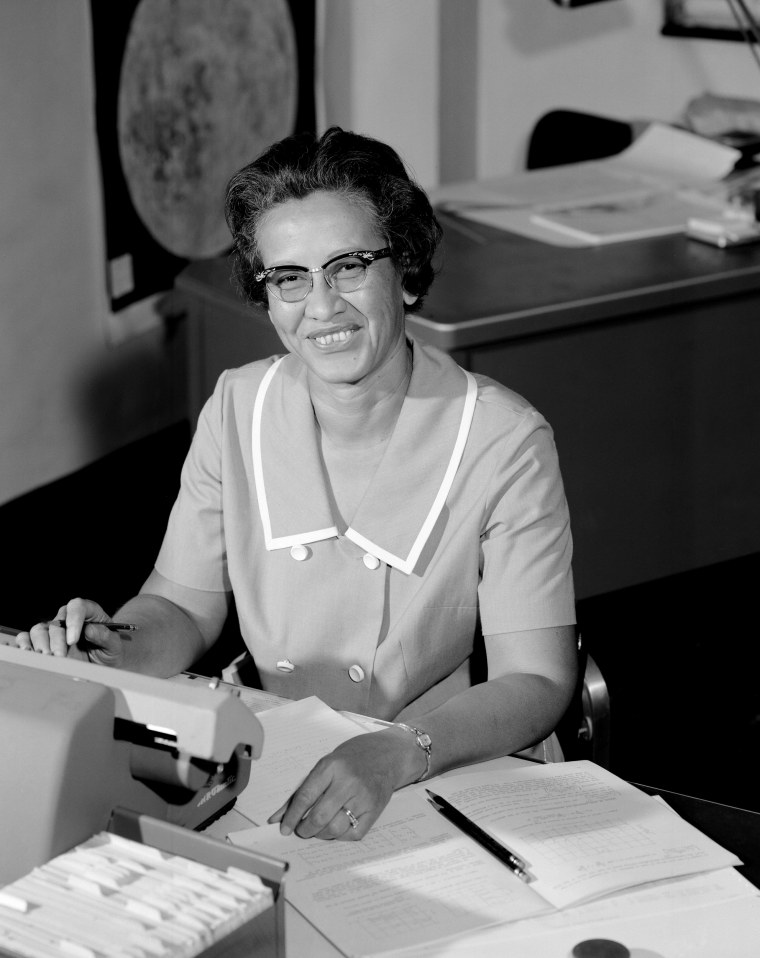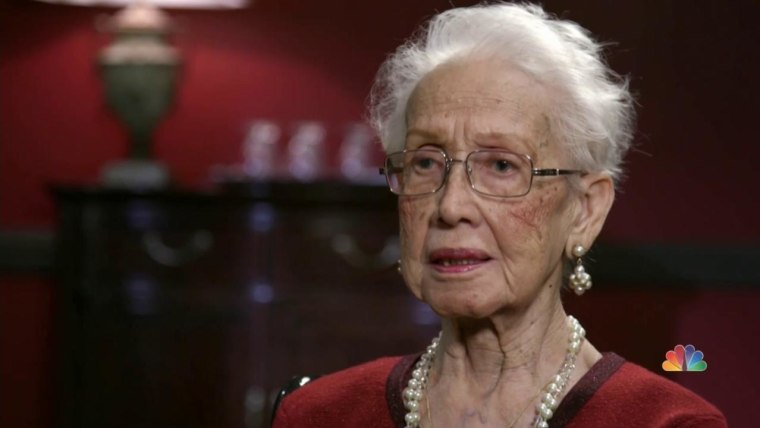By Elisha Fieldstadt
Katherine Johnson, one of the NASA mathematicians depicted in “Hidden Figures,” died Monday, the administrator of NASA said. She was 101.
Johnson “was an American hero and her pioneering legacy will never be forgotten,” NASA administrator Jim Bridenstine wrote on Twitter.

Johnson was portrayed by Taraji P. Henson in the Oscar-nominated 2016 film about trailblazing black women whose work at NASA was integral during the Space Race.
The film also stars Octavia Spencer as mathematician Dorothy Vaughan and Janelle Monáe as engineer Mary Jackson.
Johnson began working at NASA’s predecessor, the National Advisory Committee for Aeronautics’ in 1953 at the Langley laboratory in Virginia. In her role there, she did trajectory analysis for Alan Shepard’s 1961 mission Freedom 7, which was America’s first human spaceflight, according to NASA.
She was also the first woman in the Flight Research Division to receive credit as an author of a research report for her work with Ted Skopinski on detailing the equations describing an orbital spaceflight.
She was best-known though for work that greatly contributed to the first American orbital spaceflight, piloted by John Glenn.
The 1962 flight required the construction of a “worldwide communications network” linking tracking stations around the world to computers in Washington, D.C., Cape Canaveral, and Bermuda.
But astronauts weren’t keen on “putting their lives in the care of the electronic calculating machines, which were prone to hiccups and blackouts,” according to NASA. So Glenn asked engineers to “get the girl,” referring to Johnson, to run the computer equations by hand. “If she says they’re good,’” Johnson remembered Glenn saying, “then I’m ready to go.”
“Glenn’s flight was a success, and marked a turning point in the competition between the United States and the Soviet Union in space,” NASA says.
But “when asked to name her greatest contribution to space exploration, Katherine Johnson talks about the calculations that helped synch Project Apollo’s Lunar Lander with the moon-orbiting Command and Service Module,” according to NASA. Johnson worked for NASA for more than three decades, retiring in 1986.
She was born in White Sulphur Springs, West Virginia, in 1918 and skipped several grades due to her “intense curiosity and brilliance with numbers,” says her NASA profile. At 13 she was attending the high school located on the campus of historically black West Virginia State College, and at 18 enrolled there for undergraduate studies.
It was at West Virginia State that she found a mentor in math professor W. W. Schieffelin Claytor, the first African American to publish in a mathematical research journal and the third African American to earn a Ph.D. in Mathematics.
After graduating in 1937 with the highest honors, Johnson began teaching at a black public school in Virginia.
She also made history, before her NASA career, when she and two men became the first three black students to be offered admission to West Virginia University after the state “quietly” integrated its graduate schools in 1939, according to NASA.
Johnson enrolled in the graduate math program but left school after the first session to start a family with her husband, James Goble. She had three daughters and returned to teaching when they grew older.
In 1952, a relative told her about the position in the all-black West Area Computing section at NACA. She and Goble moved their family to Newport News, Virginia, to pursue the position. Johnson was placed on a temporary project, but her role quickly became permanent.




